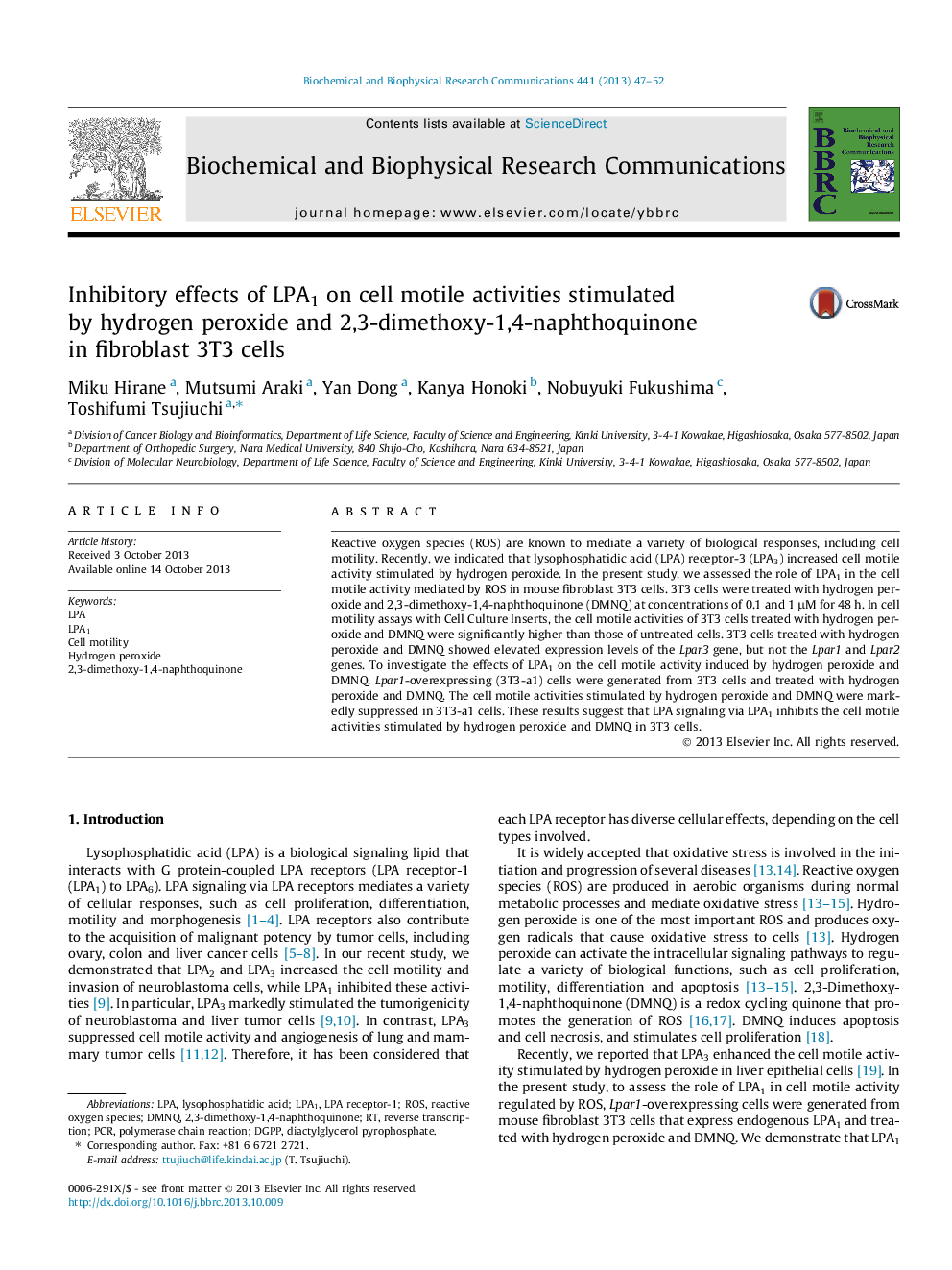| Article ID | Journal | Published Year | Pages | File Type |
|---|---|---|---|---|
| 10756645 | Biochemical and Biophysical Research Communications | 2013 | 6 Pages |
Abstract
Reactive oxygen species (ROS) are known to mediate a variety of biological responses, including cell motility. Recently, we indicated that lysophosphatidic acid (LPA) receptor-3 (LPA3) increased cell motile activity stimulated by hydrogen peroxide. In the present study, we assessed the role of LPA1 in the cell motile activity mediated by ROS in mouse fibroblast 3T3 cells. 3T3 cells were treated with hydrogen peroxide and 2,3-dimethoxy-1,4-naphthoquinone (DMNQ) at concentrations of 0.1 and 1 μM for 48 h. In cell motility assays with Cell Culture Inserts, the cell motile activities of 3T3 cells treated with hydrogen peroxide and DMNQ were significantly higher than those of untreated cells. 3T3 cells treated with hydrogen peroxide and DMNQ showed elevated expression levels of the Lpar3 gene, but not the Lpar1 and Lpar2 genes. To investigate the effects of LPA1 on the cell motile activity induced by hydrogen peroxide and DMNQ, Lpar1-overexpressing (3T3-a1) cells were generated from 3T3 cells and treated with hydrogen peroxide and DMNQ. The cell motile activities stimulated by hydrogen peroxide and DMNQ were markedly suppressed in 3T3-a1 cells. These results suggest that LPA signaling via LPA1 inhibits the cell motile activities stimulated by hydrogen peroxide and DMNQ in 3T3 cells.
Keywords
Related Topics
Life Sciences
Biochemistry, Genetics and Molecular Biology
Biochemistry
Authors
Miku Hirane, Mutsumi Araki, Yan Dong, Kanya Honoki, Nobuyuki Fukushima, Toshifumi Tsujiuchi,
